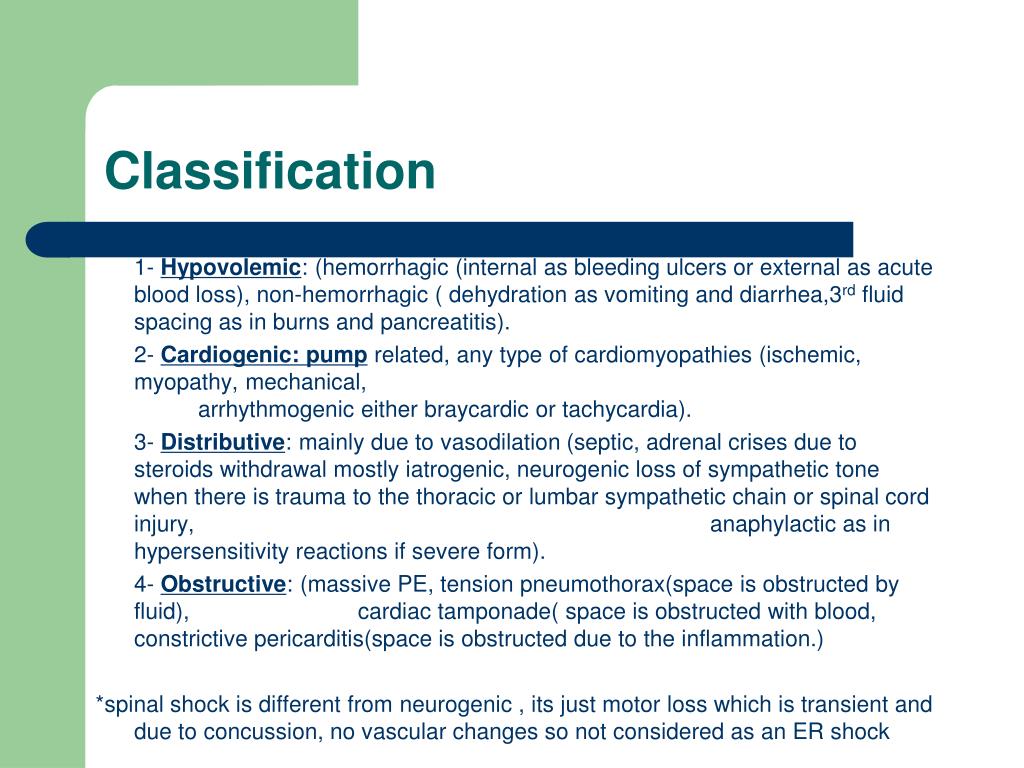

There is elevated potassium, serum lactate, and blood urea nitrogen levels. No single symptom or diagnostic test establishes the diagnosis or severity of shock. Multiple organ dysfunction syndrome is the end result of hypovolemic shock. Disseminated intravascular coagulation is a pathological process characterized by a widespread activation of the clotting cascades that results in the formation of blood clots in the small blood vessels.

Hypovolemic shock requires early recognition of signs and symptoms. Inadequate vascular volume leads to decreased venous return and cardiac output. External fluid loss. External fluid loss can result from severe bleeding or from severe diarrhea, diuresis, or vomiting.Internal fluid loss. Internal fluid losses can result from hemorrhage or third-space fluid shifting.Hypovolemic shock usually results from acute blood loss- about one-fifth of the total volume. As the tissue perfusion decreases, the delivery of nutrients and oxygen to the cells are decreased, which could ultimately lead to multiple organ dysfunction syndrome. Arterial pressure.Reduced mean arterial pressure follows as the cardiac output gradually decreases.Cardiac output.Cardiac output is decreased because of the decrease in stroke volume.Stroke volume. The stroke volume is decreased.The preload or the filling pressure becomes reduced.

Diminished venous return occurs as a result of the decrease in arterial blood pressure. Compensatory mechanism.The resulting drop in the arterial blood pressure activates the body’s compensatory mechanisms in an attempt to increase the body’s intravascular volume.Fluid loss can either be internal or external fluid loss. The pathophysiology of hypovolemic shock include the following processes: Vascular fluid volume loss causes extreme tissue hypoperfusion.In hypovolemic shock, reduced intravascular blood volume causes circulatory dysfunction and inadequate tissue perfusion.Hypovolemic shock is one of the most common cardiac complications.


 0 kommentar(er)
0 kommentar(er)
